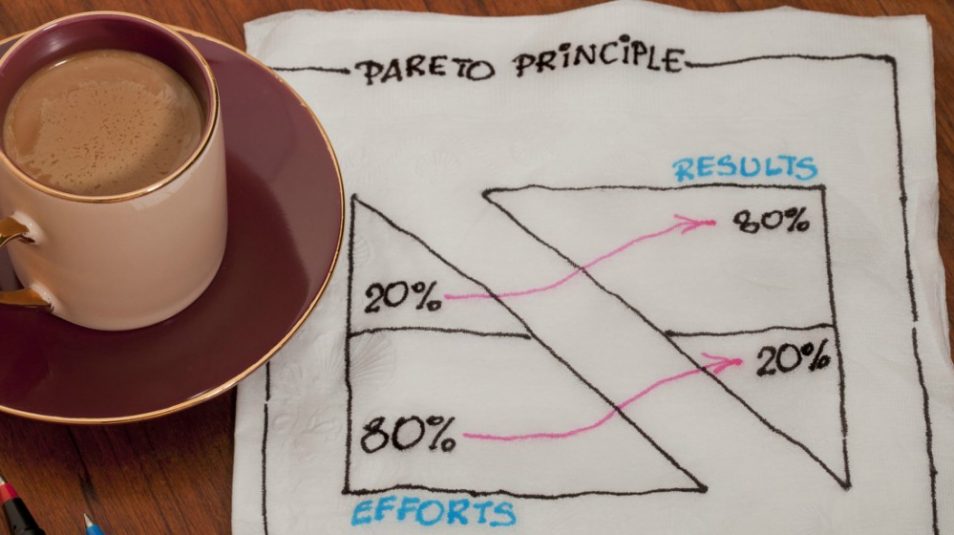Pareto, Juran, and Your "Vital Few"

Personal Development
April 20, 2018
Wally Bock
Author + Blogger + Ghostwriter + Writing Coach
Topics
Change, productivity, Self Development, Time ManagementIn late nineteenth-century Italy, about twenty percent of the people owned eighty percent of the land. Economist Vilfredo Pareto didn't think much about that until he noticed that twenty percent of his peapods produced eighty percent of all his peas.
He wrote about the phenomenon and added equations to describe it, but he never called what he found by any particular name. That would happen when a young American working to improve factory production during World War II noticed that the distribution Pareto identified wasn't limited to land and peapods.
The American was Joe Juran, one of the early advocates for what became the quality movement in American business. He noticed that eighty percent of the defective parts came from about twenty percent of the factories. And, inside those same factories, eighty percent of the defects came from about twenty percent of the work stations or processes or divisions.
You'll hear the principle called by many names, including "Pareto's Law," "the Pareto Principle," or "the 80/20 Rule." I prefer the name Juran gave to the idea. He called it the principle of "the vital few and the trivial many."
I like that name because it unhooks the concept from mathematics and turns it into something you can use in just about every part of your life. Figuring out the "vital few" things to do will make you more efficient and productive.
Stalking the Big Payoff: Identifying your Vital Few
Most business reports won't help you identify your vital few. They're likely to be in chronological, geographical, or alphabetical order. You'll spot the vital few quickly if you begin putting your data in ranked lists.
List your customers by revenue or profit, from greatest to smallest. Look at the two or three customers at the top of the list. They probably account for the lion's share of your profit. Don't stop there; put your prospects in a ranked list by potential sales or profit.
Rank the people you spend time with by the amount of time and you'll get a clear picture of who influences you. A ranked list will also clearly identify the team members that contribute the most.
Maximizing Your Payoff: Using Your Time and Money Effectively
Once you know what’s important, you want to devote resources to it. A ranked list of your expenses will leave no doubt about how you spend most of your money. But how do you spend your most precious resource, time?
Start with the reality that most of us spend about half our work time on what I call “business laundry.” It includes things like filing and checking email. You have to do it, or the system breaks down; but you won’t make any progress doing the laundry.
If you work a ten-hour day, assume that you’ve got five hours max to spend on productive work. Identify the tasks you do that move things forward. They’re your specific “vital few” activities.
For the next week, keep a record of the amount of time you spend on those “vital few.” With timer apps it’s easy to do that these days. Record the time you spend on each vital activity at the end of the day. At the end of the week, figure out how much time you devoted to your vital few.
If you’re doing this for the first time, you will probably be shocked at how little time you’re spending on what’s most important. That’s the bad news. The good news is that once you know, you can start doing better.
You can stop spending time on activities that don’t move things forward. You can start increasing the time you spend on your vital few.
Boss's Bottom Line
Don't just sit there. Identify your vital few, track the time you spend on them, and start getting better.





